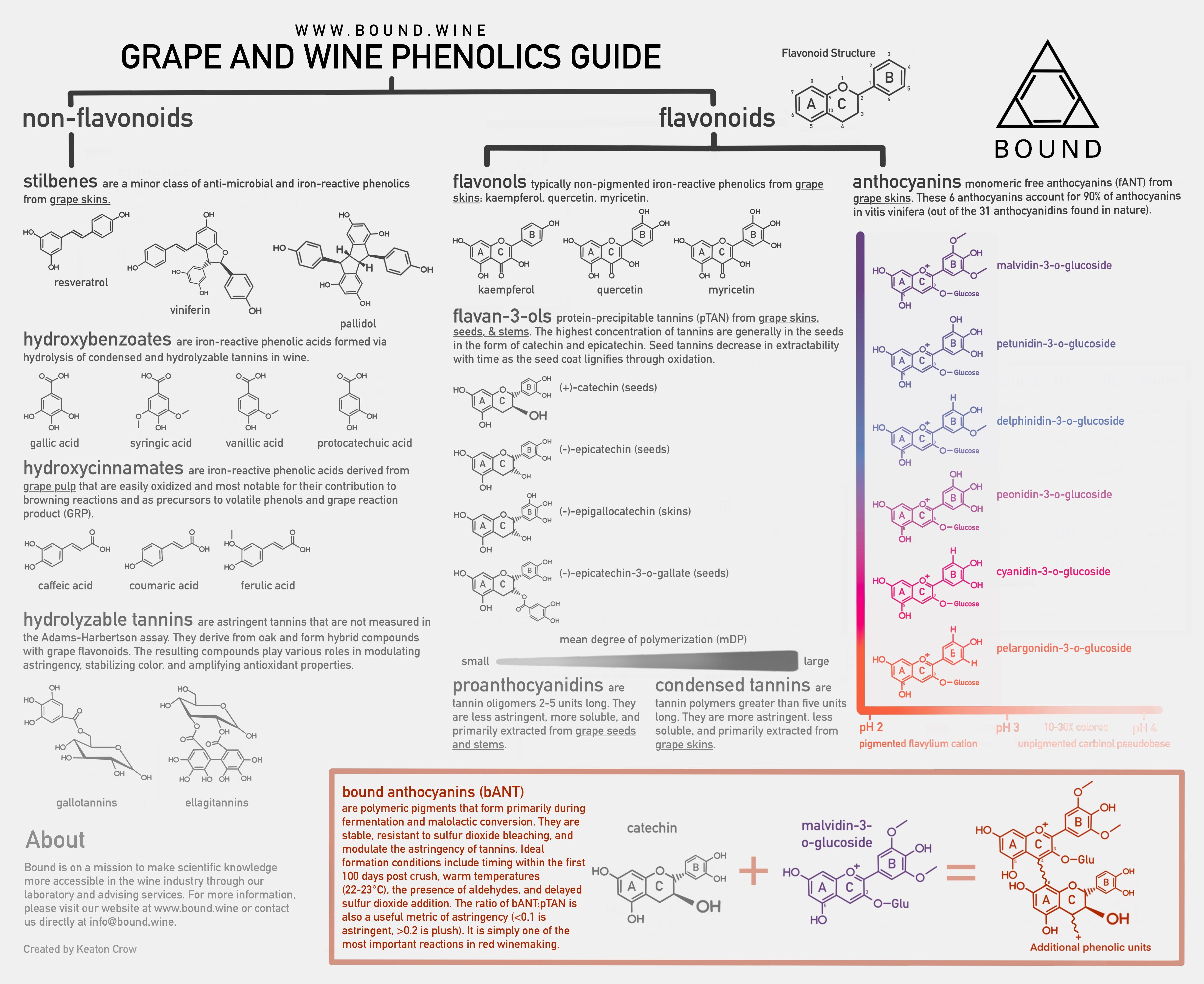

Protein-Precipitable Tannins (pTAN)

Figure 1. WINEXRAY's representative phenolic profile of a 21-day macerated Bordeaux varietal fermentation (The Future of Winemaking: Honoring the Vision of Professor Roger Boulton, 2022).
Protein-Precipitable Tannins (pTAN) are grape and stem derived tannins that react with saliva and are responsible for structure, aka the breadth of tannins on the palate. They are very stable and malleable using different controls throughout the grape growing and winemaking. To quantify pTAN, we use the Adams-Harbertson Assay which was designed to mimic human senses using Bovine Serum Albumin to precipitate grape-derived condensed tannins. For this reason, it has the highest correlation to astringency out of any analysis in the world. In our experience, pTAN is a better metric for structure, or the breadth of astringency on the palate, as astringency depends on the concentration and activity of the tannins as well as other matrix variables related to the wine (sweetness, ABV, etc.). The assay also does not measure hydrolyzable oak tannins despite their astringent properties. Nevertheless, the vast majority of tannins in wine are from grape skins, seeds, and stems. They vary in concentration, size, composition, and polarity, all of which impact the resulting astringency and texture of the wine.
The A-H assay’s protein-precipitable tannin measurement has the highest correlation to astringency (r2 = 0.82-0.90) when compared to high-performance liquid chromatography (HPLC) and methyl cellulose precipitation (MCP) (Mercurio & Smith, 2008). This being said, the characteristics of tannin chemistry are too diverse for concentration to represent astringency alone. Instead, we prefer to refer to protein-precipitable tannin concentration as a metric of wine structure because astringency is dependent on several other variables (anthocyanin incorporation in particular). Structure, on the other hand, is the phenolic backbone from which skin-macerated wines are built. Higher pTAN concentrations relate to a wider breadth of astringency on the palate. It is important to note that tannins are much more stable and persistent than free anthocyanins in wine. In practice, we see that protein-precipitable tannins decrease roughly 10-20% within the first year post-fermentation and persist thereafter at very stable concentrations. Another thing to consider is that extraction during fermentation is partial. This informs our fundamental understanding of tannins. They are abundant and they are persistent. The only exception to this rule is in the presence of extreme heat or extreme age. Grapes nearing ripeness exposed to ambient temperatures above 43°C (110°F) show signs of cascading oxidation that deplete skin and seed tannin concentrations (about 30-50%). This type of heat stress also diminishes phenolic reactivity and stability in the finished wine with concentrations continuing to decrease in extended maceration and aging. WINEXRAY’s study with UC Davis in 2022 found an additional 60% reduction in extracted protein-precipitable tannins due to extended maceration of heat-damaged fruit. This is the greatest and most quantifiable consequence we have seen due to climate change.
Profiling tannin extraction during fermentation is especially useful because changes in sugar, alcohol, and acidity are all interfering with your ability to perceive astringency (Sáenz-Navajas et al., 2010). We also find protein-precipitable tannin in finished wines to be exceptionally useful in evaluating wines by style, vintage, and producer. Below are reference levels for protein-precipitable tannin measured in finished wines.
- <500 ppm is a low amount of structure found in Pinot Noir and high-yield red wines.
- 500-1,000 ppm is a classic range for Bordeaux wines.
- 1,000-1,500 ppm is a classic range for Napa wines.
- 1,500-2,000 ppm is a range typical for highly structured wines from Napa and Barolo.
- >2,000 ppm is an extremely high structure found in highly tannic cultivars such as Sagrantino, Aglianico, and Corvina.
Perhaps the most common misunderstanding about wine tannins is the relationship between tannin size and astringency. We often hear speak of soft, polymerized tannins that develop as they age. This is misleading. Not only are larger tannins more astringent, but they also tend to decrease in size with wine age. The average size of tannin polymers in wine is expressed as the mean degree of polymerization (mDP). This includes monomers (mDP = 1), oligomers (2 ≥ mDP <5), and polymers (mDP ≥ 5). One study showed that 21 Bordeaux wines between 3 and 26 years old all had an mDP between 1 and 3 (Drinkine et al., 2007). This is in contrast to grape skin tannins which have mDPs ranging from 34-86 (Morata, 2018). Once extracted into wine fermentation, larger tannin molecules undergo acid catalysis creating small polymers (Smith, 2013). On the other hand, colloids are aggregates of bound anthocyanins, proteins, polysaccharides, and other subunits that snowball into larger and larger macromolecules as wine ages until they eventually precipitate out of solution. The incorporation of other molecules increases the polarity of the tannins thus decreasing their astringency.

Figure 1. Monomeric tannin structures common to V. vinifera
Monomeric tannin composition in grapes and wine consists primarily of the following 4 compounds: catechin, epicatechin, epigallocatechin, and epicatechin-3-O-gallate. This sounds simple, but the total number of unique combinations of these tannins is likely many multiples greater than 65,532 (Adams & Harbertson, 1999). Their combinations are magnificent in their complexity, and their respective concentrations in grapes and wines are largely due to variables outside of a viticulturist's or winemaker’s control. For example, the only significant way to selectively extract skin versus seed tannins is by controlling maceration length. Grape skins have more epigallocatechin which will rapidly extract at the start of fermentation and grape seeds have more catechin which requires more alcohol and time to extract. It’s important to note that even though the wine has completed fermentation, there are still a lot of suspended solids that will mask the underlying astringency. This character is highly specific to site, cultivar, producer, etc. For this reason, we provide phenolic ratios as a reference point for winemakers. If protein-precipitable tannin is a measure of structure, then the ratio of bANT:pTAN is a measure of astringency.
In summary, the diversity of tannin polymers in wine is infinitely complex and surely one of the truest chemical markers of terroir that winemakers have little influence on. Winemakers can focus on managing protein-precipitable tannin concentration to establish structure, form bound anthocyanins to modulate astringency, and incorporate oxygen to decrease tannin activity. Applying this knowledge through and beyond the wine production process lends us powerful insight into its behavior. Rather than seeking to manipulate wine’s complexity, we can observe and work alongside it to reveal its potential. Tannins will always remain one of wine’s greatest mysteries, and the human palate wine’s greatest analytical tool.
To learn more about the scientific tools used in winemaking and see how they apply to wines from around the world, become a Bound advising client.
References
Colantuoni, G., McLeod, S. WINEXRAY LLC. https://www.winexray.com/
Adams, D. O., & Harbertson, J. F. (1999). Use of Alkaline Phosphatase for the Analysis of Tannins in Grapes and Red Wines. American Journal of Enology and Viticulture, 50(3), 247–252. https://doi.org/10.5344/ajev.1999.50.3.247
Drinkine, J., Lopes, P., Kennedy, J. A., Teissedre, P.-L., & Saucier, C. (2007). Ethylidene-Bridged Flavan-3-ols in Red Wine and Correlation with Wine Age. Journal of Agricultural and Food Chemistry, 55(15), 6292–6299. https://doi.org/10.1021/jf070038w
Mercurio, M. D., & Smith, P. A. (2008). Tannin Quantification in Red Grapes and Wine: Comparison of Polysaccharide- and Protein-Based Tannin Precipitation Techniques and Their Ability to Model Wine Astringency. Journal of Agricultural and Food Chemistry, 56(14), 5528–5537. https://doi.org/10.1021/jf8008266
Morata, A. (2018). Red Wine Technology (1st ed.).
Sáenz-Navajas, M.-P., Campo, E., Fernández-Zurbano, P., Valentin, D., & Ferreira, V. (2010). An assessment of the effects of wine volatiles on the perception of taste and astringency in wine. Food Chemistry, 121(4), 1139–1149. https://doi.org/10.1016/j.foodchem.2010.01.061
Smith, C. (2013). Postmodern Winemaking: Rethinking the Modern Science of an Ancient Craft. University of California Press.
Choose options


FAQs
Frequently Asked Questions
Supplies
- Centrifuge Tubes (SKU: G1005-50-2)
- Blank Label Sheets
- Label Template (Download)
- We supply 50 mL centrifuge tubes and labels for local Santa Barbara clients upon request.
Best Practices
- Collect a sample of your wine in a way that is most representative of the entire lot (i.e. practice flushing your sample valve, collecting after movements like pumpovers, stirring your barrel, etc.).
Label
- Label each sample appropriately with your Client ID, Sample Date, and Sample ID. Samples for Phenolics analysis also require a Crush Date, Varietal, and Appellation. The analysis cannot be performed without the applicable information for each sample.
- Mark the panel.
- Individual parameters can be added at the bottom of the label. A full list can be found on our ANALYSES page.
Clients are able to submit samples by contacting us directly and scheduling a pickup, delivering directly to our lab, or sending via the mail.
To arrange for pickup, clients must be located near Lompoc, Buellton, Santa Ynez, Goleta, or Santa Barbara and notify us by 11 am for same-day retrieval. Please contact us for more information.
- We provide same-day results by 7 pm with a guaranteed turnaround within 24 hours of sample receipt.
- Samples that are not analyzed same-daly are refrigerated overnight and analyzed first thing the next morning.
- Results are delivered via email in PDF format and uploaded to your account.
- Our invoices are sent via email and are due upon receipt.
- Your payment iOur invoices are sent via email and are due upon receipt.
- Your payment is securely processed through Bound’s website using one of the most trusted e-commerce platforms in the world.
- You can also opt-in to our invoice autopay feature.s securely processed through Bound’s website using one of the most trusted e-commerce platforms in the world.
- You can also opt-in to our invoice autopay feature by clicking “SIGN UP FOR AUTOPAY” on your account page.
To ensure their stability, we ask our clients freeze their juice samples before shipment. Please contact Bound with any additional questions about sample preparation before shipment. We recommend expedited same-day to one-day shipping with a tracking number included.
Frozen
Samples can be placed in a freezer 24-hours in advance and shipped with an ice pack. Do not over-fill the polypropylene tubes or use glass containers as the frozen liquid will expand and could pose a safety concern. Freezing samples is a better alternative to boiling when analyzing compounds like ethanol, volatile acidity, free sulfur, and phenolics. Label each sample as "FROZEN".

